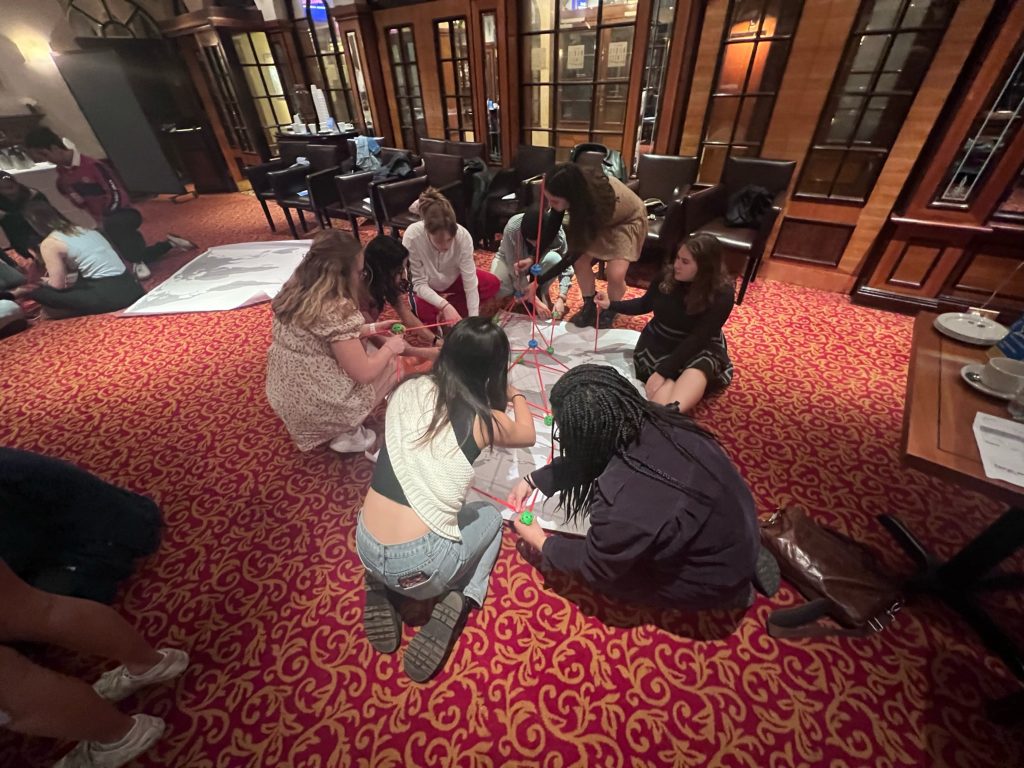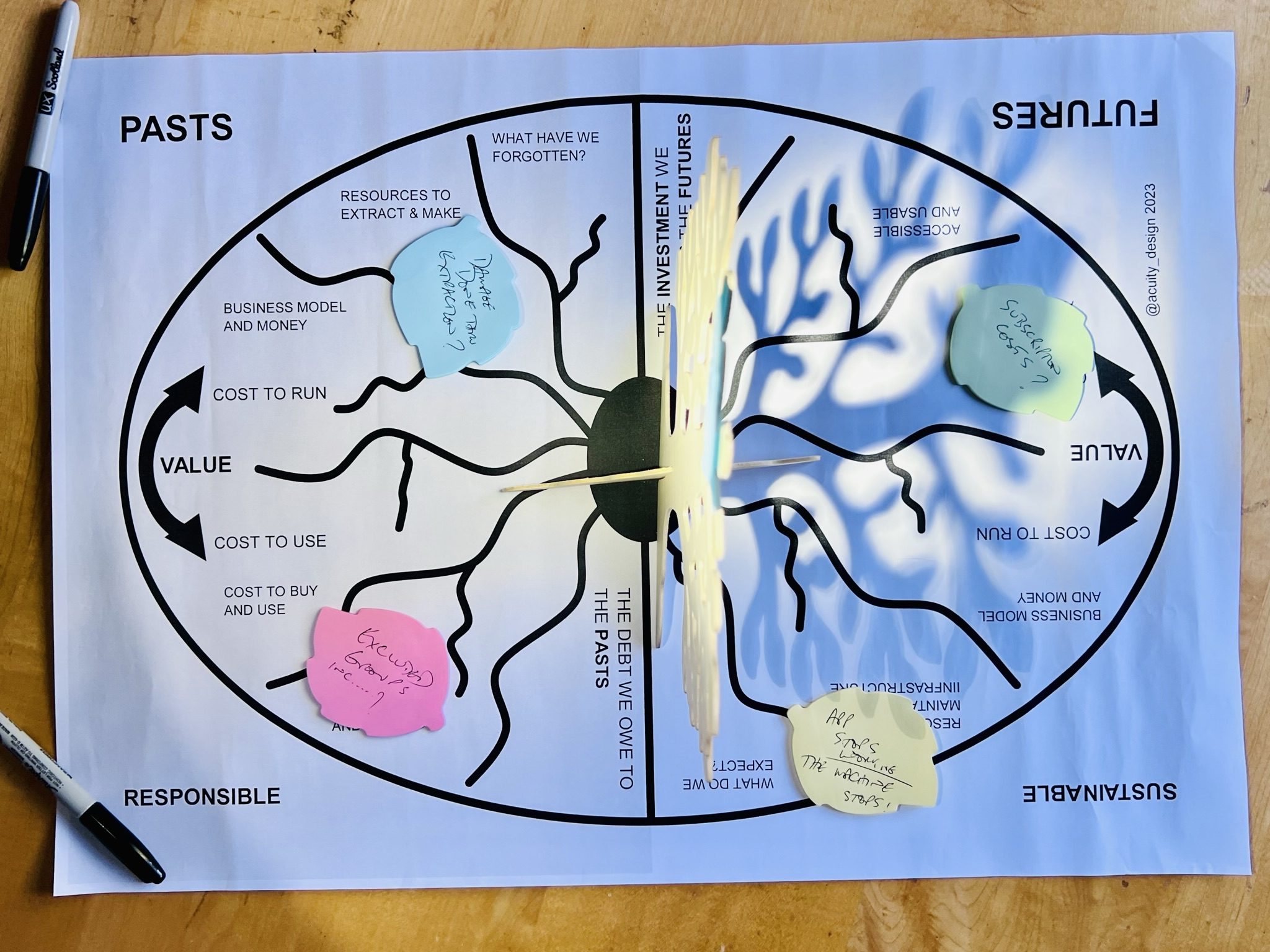
I have a new workshop to deliver in July for a conference. The topic has not been defined yet so I am experimenting with possibilities. This post is about one idea I’ve developed to physical prototype level.
With workshops, I need to see and use the planned activity to understand its worth. Practically, I need to check the activity makes sense and can be assembled easily. Conceptually, I need to see if the ideas I am trying to communicate make sense in the experience of the activity.
Design Fictions and Futures
Design fictions and speculative designs are a nice idea. Using storytelling to create a fuller sense of a product or service idea and its effects upon users and communities. I do however, have a problem with them. Like a lot of futurology, they use the present to lean into the future without recognising the past enough.
This temporal imbalance came up in some of my workshops in 2022 on ChronoDesign when we built models of pasts, present and futures.

Leaning into futures without exploring and respecting the roots in the past of exclusion and exploitation will lead to the continuation of dangerous biases.
We need more histories to build more futures.
Showing roots and throwing shade

That need to make the past explicit when imagining the future is a symmetry that is also apparent in the need to take responsibility for historic errors when considering sustainable innovations.
The workshop model developed this week uses a tree form and metaphor for two main reasons. The tree is where ideas of design fictions are stuck like leaves. It is the tree roots that stretch thru time and the shade cast by the tree that matter tho.
Roots
We need to show the impacts and consequences of our design fictions, both forward and backwards in time.
From a sustainability angle, it is ensuring that any innovation does not exploit resources or people and has a business model that rewards people equitably while maintaining its infrastructures.
From a responsibility angle, how does the imagined innovation recognise and correct out historic errors in exclusion and profiteering? How can the future pay reparations to the past?
These are the roots on the model. Making the issues explicit. Making lost or ignored histories visible. Showing where future issues may arise.
Shade
Physical models allow people to walk around them. Physical models can affect people.
Most workshop participants will have mobile phones with torches. This means they can throw shade.
Illuminating the tree and creating shadows and dappled effect is a way of playing while engaging in group conversations about sustainability and responsibility. We use the light and dark to share ideas and find ways to balance pasts, present and futures.
A workshop
This activity is just one part of a 3 hour workshop but it is the core element.
I will offer this workshop to the conference as one option.
If you’re interested in it for another venue, do let me know. Contact me by email if you like.